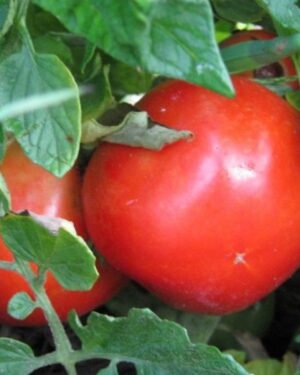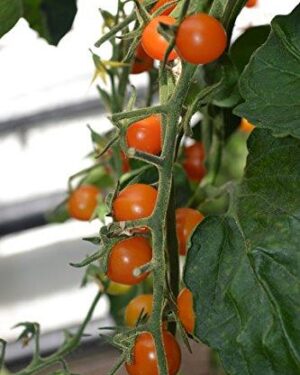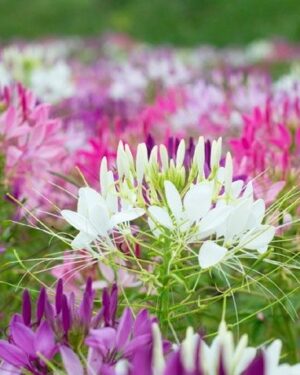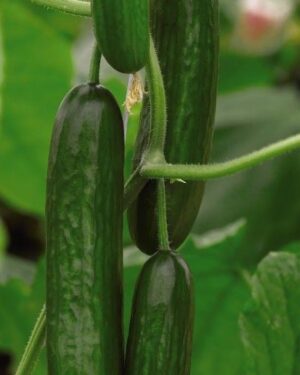Description
Kohlrabi Early White Vienna
Kohlrabi Early White Vienna , This White Heirloom variety is an easy to grow and versatile vegetable often overlooked for the home garden. Its bulb-like growth develops aboveground, has a distinctive nut-like flavour and tender flesh, which can be cooked, stir-fried or used in salads and dips. This variety has a white skin and flesh and is excellent fresh or stir-fried. This is the best variety for early sowings for early summer / autumn crops. Ready in around 60 days, best harvested at 3-4 Inches in diameter.
Cultivation advice
- Choose well-draining, fertile soil with a slightly acidic to neutral pH. Add organic matter like compost to enhance soil fertility. Directly sow kohlrabi seeds or transplant seedlings about 6-8 inches apart.
- Kohlrabi thrives in full sunlight but can tolerate partial shade. Ensure the plants receive at least 6 hours of sunlight daily for optimal growth.
- Keep the soil consistently moist throughout the growing season. Kohlrabi prefers even moisture to prevent the development of woody or pithy bulbs.
- Apply a layer of organic mulch around the plants to retain moisture, regulate soil temperature, and suppress weeds.
- Use a balanced organic fertilizer or well-rotted compost at planting. Avoid over-fertilizing, as excessive nitrogen can lead to excessive leaf growth at the expense of bulb development.
- If you start from seeds, thin out the seedlings once they have a few true leaves, leaving the healthiest plants spaced appropriately.
- Kohlrabi can benefit from companion planting with herbs like mint or chamomile. Avoid planting near tomatoes and peppers.
- Keep an eye out for common pests like cabbage worms or aphids. Use organic pest control methods, such as neem oil or insecticidal soap.
- Harvest kohlrabi when the bulbs are about 2-3 inches in diameter. Use a sharp knife to cut the bulbs just above the soil level. Younger bulbs tend to be more tender.
- For a continuous harvest, consider successive plantings every few weeks. This can extend the availability of fresh kohlrabi throughout the growing season.
- Kohlrabi is versatile and can be enjoyed raw in salads, slaws, or as a crunchy snack. It can also be cooked by roasting, steaming, or sautéing. The leaves are edible and can be used in salads or cooked like other greens.
- Kohlrabi can be stored in the refrigerator for several weeks. Remove the leaves before storing, and keep the bulbs in a cool, humid environment
- Prior to planting, enrich the soil with well-rotted compost or aged manure. Kohlrabi benefits from nutrient-rich soil.
- Provide consistent moisture to the soil, especially during dry spells. Adequate and even watering helps prevent the development of tough or woody bulbs.
- If you want a milder taste and a more tender texture, consider blanching kohlrabi by covering the bulbs with soil or using commercial blanching collars.
- Harvest kohlrabi when the bulbs are still small to medium-sized for the best flavor and tenderness. Larger bulbs may become fibrous.
- Kohlrabi can be grown in containers, making it suitable for small spaces. Use a well-draining potting mix and ensure the container has drainage holes.
- Practice crop rotation to minimize the risk of diseases. Avoid planting kohlrabi in the same spot where members of the cabbage family were grown in the previous year.
- If you have a surplus harvest, kohlrabi can be blanched and frozen for longer storage. This allows you to enjoy its freshness even after the growing season.
- Keep a gardening journal to note planting dates, weather conditions, and any observations. This information can be valuable for future seasons.
- Be aware that kohlrabi can bolt (produce a flowering stem) in response to high temperatures or extended daylight. Bolting negatively affects the quality of the edible bulb.
- Kohlrabi has a mild, slightly sweet flavor. Experiment with different culinary pairings, such as adding it to stir-fries, pickling, or incorporating it into your favorite vegetable dishes.









Reviews
There are no reviews yet.